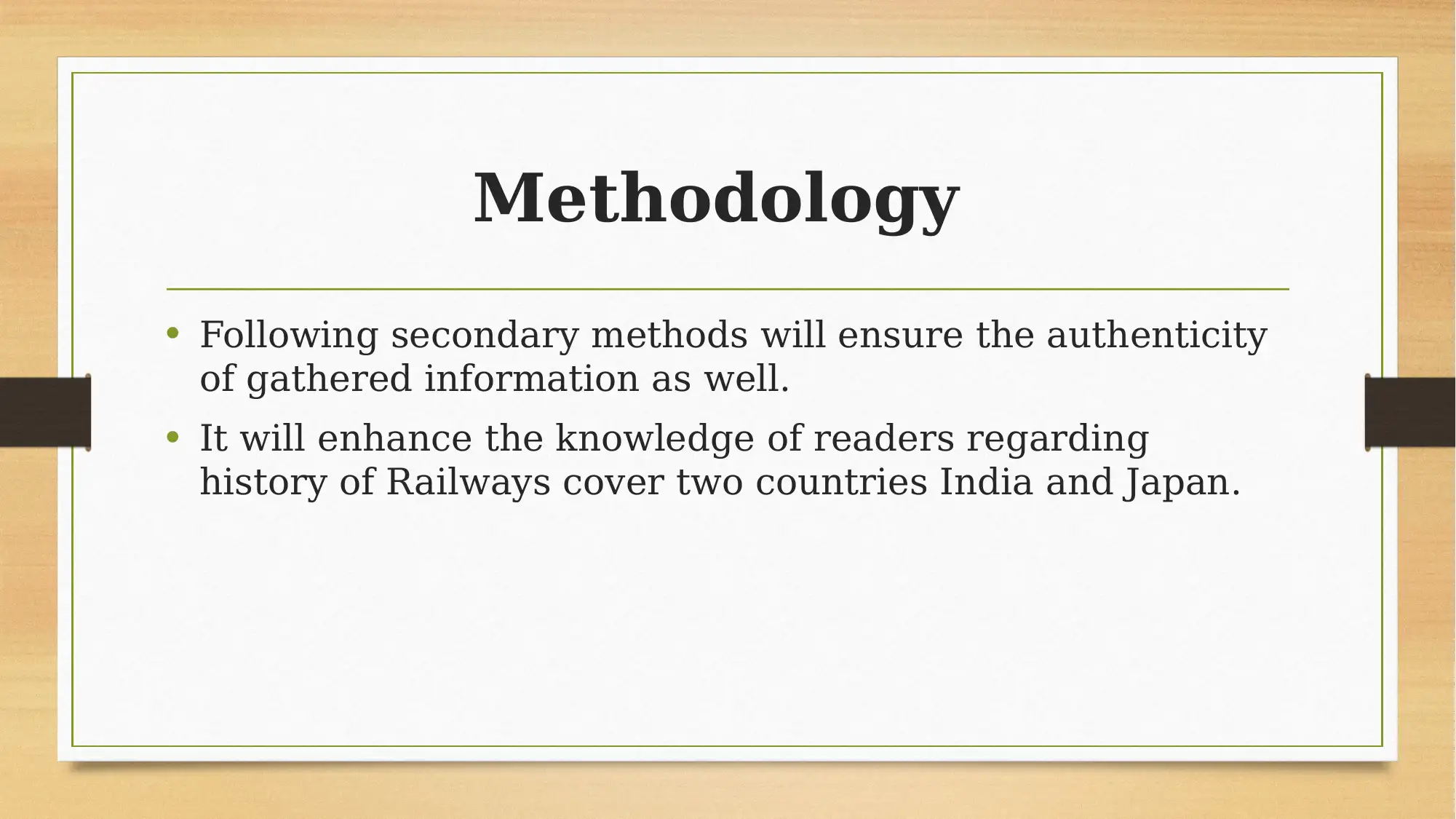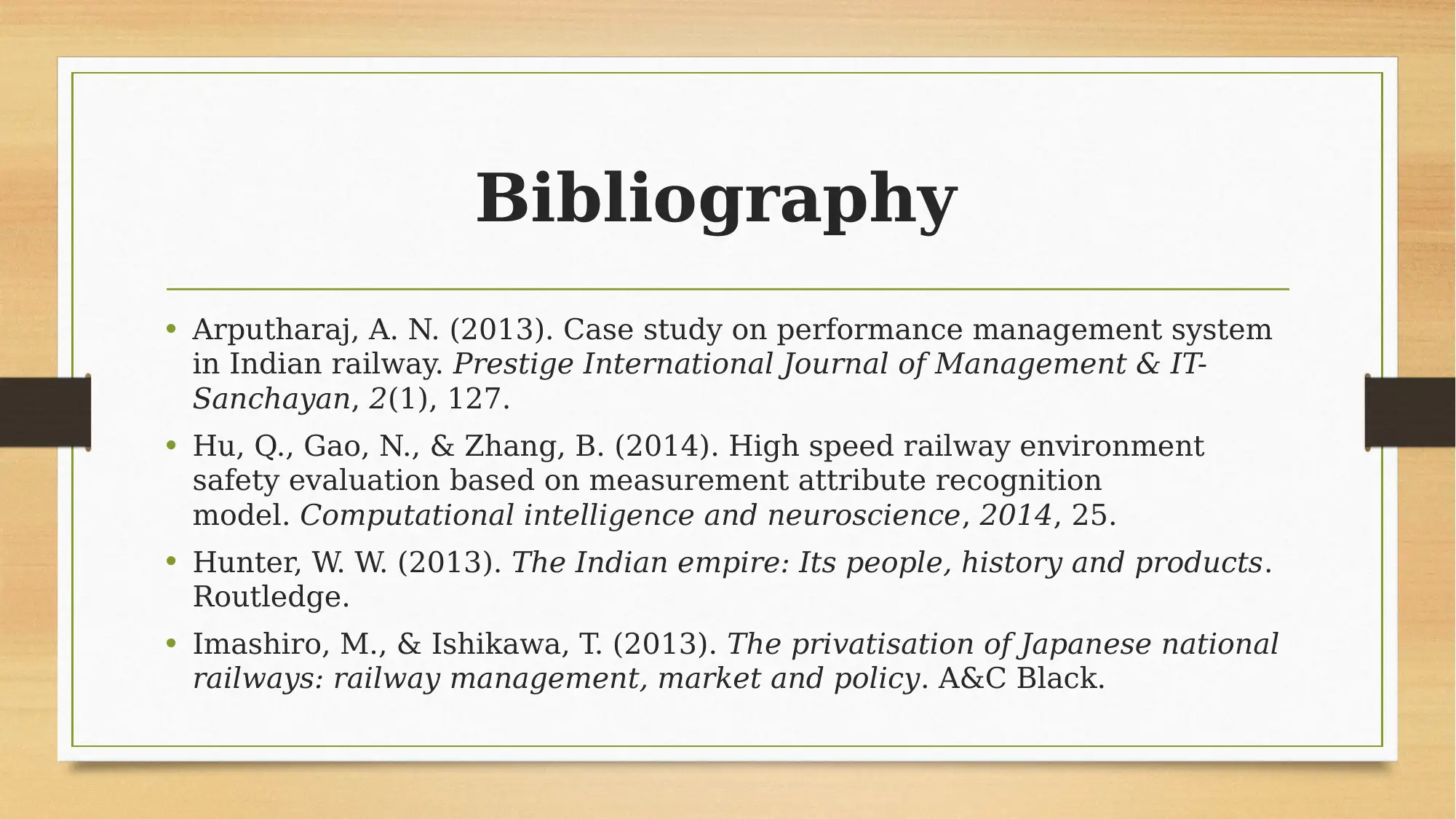Comparison of Railway Systems in India and Japan: Findings and Recommendations
VerifiedAdded on 2023/04/26
|13
|934
|215
Presentation
AI Summary
In this ppt slide we will discuss about comparison of railway systems India & japan and below are the summaries point:-
India has the 4th largest railway system in the world, but faces problems related to sanitation, security, and infrastructure
The Japanese railway system is considered an ideal parameter for efficient operations without delay complaints
The Indian railway system needs to invest in safety, sanitation, and infrastructure, and explore the Japanese model for better operation and security. Recommendations include cleanliness campaigns, police protection, and fines for unhygienic use of railway toilets.
Contribute Materials
Your contribution can guide someone’s learning journey. Share your
documents today.
1 out of 13















![[object Object]](/_next/static/media/star-bottom.7253800d.svg)